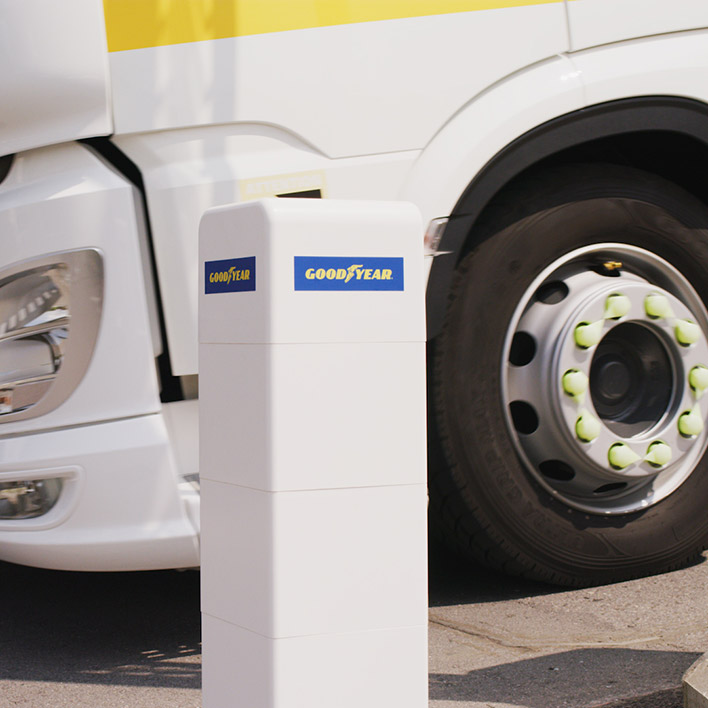The simple act of attaching the small Goodyear TPMS* sensors to each wheel can mean a huge step forward in productivity.
If a TPMS sensor detects a change in tyre temperature or pressure on any vehicle in any location, an alert is instantly sent to your desktop or mobile device. With the information at hand, you can take steps to prevent incidents that might cause expensive downtime, delayed deliveries, or unhappy customers.
Goodyear TPMS helps you avoid problems and keep your fleet running. It gives you the control; it takes away the worry. Install the Goodyear TPMS truck solution and bring your fleet up to a new level of reliability and efficiency.















